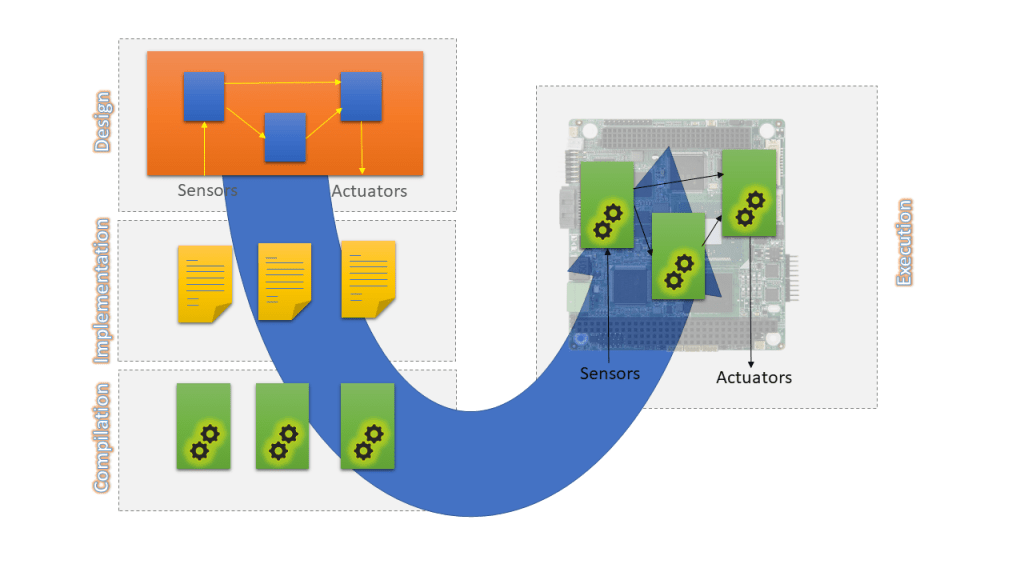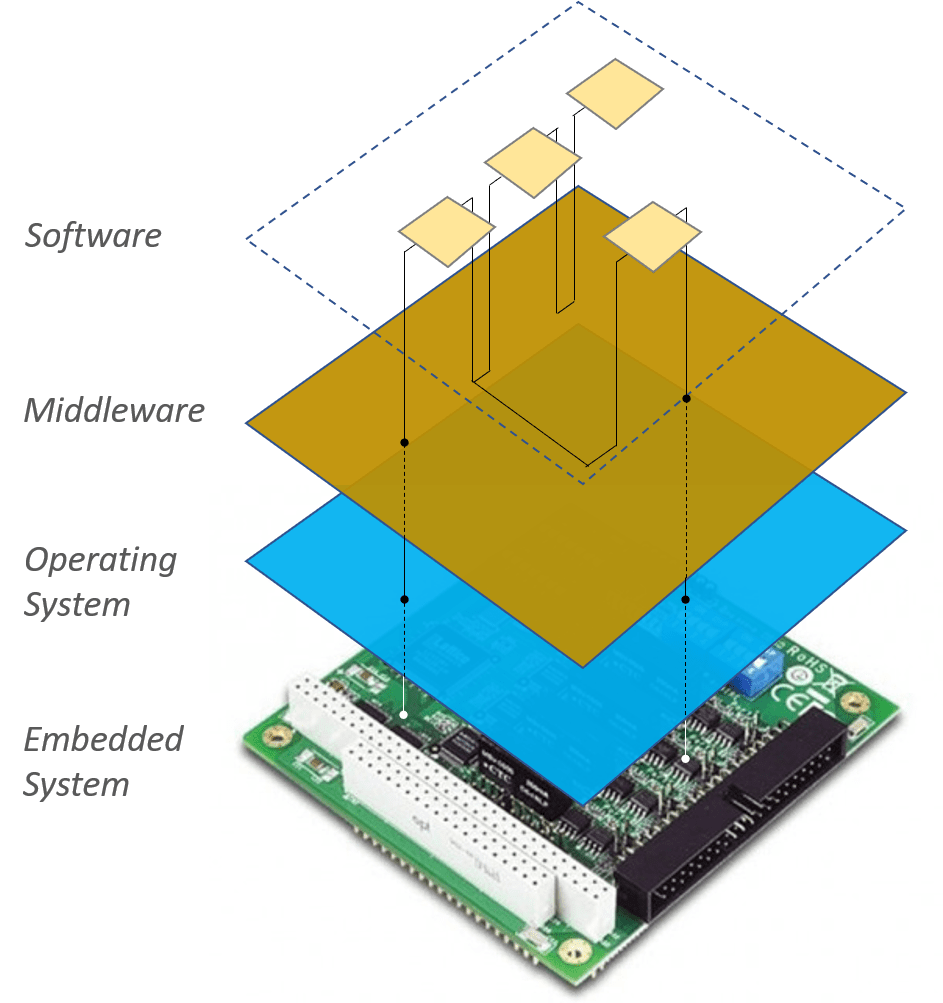SOFTWARE
Embeded solution for the real application . . . . .
READ MORE
Embedded Solutions for Real-time applications.
The design of softwares intended to be embedded must satisfy several criteria. Some of these criteria are imposed
by the specific environment (real-time, limited resources, security, etc.) in which these software will operate.
Others are linked to the normal software design process.

In software architecture, the complete realization of a given task, such as trajectory tracking, requires several
modules. The different phases of the task are expressed by the execution of these modules in which each implement
algorithms specific to the role they play in the realization of the task (acquisition of a sensor measurement,
calculation of the control law, application from control to actuators).
The interfaces of each module consist of two parts: one relating to the activity control interactions of a module
"control flow" and the other relating to interactions in terms of data exchange and events (data flow). Respecting
these interfaces during implementation allows, for the same module, to a very advanced phase of development
(production of executable for example) without requiring knowledge of algorithms implemented by other modules.
This makes it possible to develop several modules in parallel and assemble them in a last step, on the same
“infrastructure” i.e. “system” environment providing execution services). In addition to saving time due to the
parallelization of IT developments, this approach also allows several engineers to take part in development of
control software. This is especially important since the development of controllers in embedded systems is the
responsibility of actors with different skills and roles.
A “middleware” (execution infrastructure) common to all implementations must also be provided to the actors
involved. This “middleware” constitutes an abstraction of the operating system facilitating the portability of
software from a platform to another (no explicit system call within the modules). But this “middleware” offers,
above all, an API which makes available to the programmers a set of mechanisms usable, both for the implementation
of a module and for module composition (communication with peripherals, inter-module communication, etc.).
